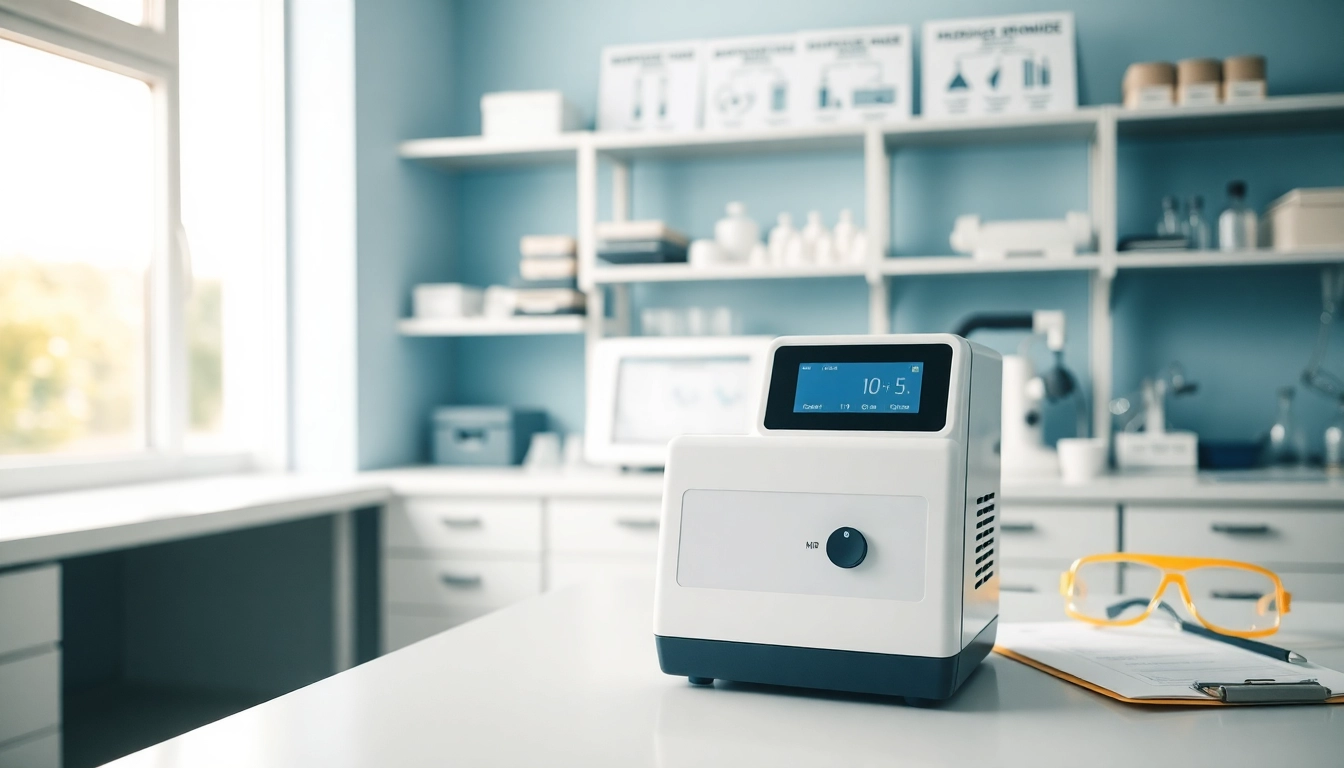What is Hydrogen Bromide Detection?
Definition and Importance
Hydrogen Bromide (HBr) is a colorless gas with a sharp odor, soluble in water, and classified as a strong acid when in solution. The detection of HBr is critical because it poses notable health risks, including respiratory irritation and potential long-term health effects upon exposure. Given its dangerous nature, effective Hydrogen Bromide detection is necessary for ensuring safety in workplaces and preventing environmental contamination.
Applications of Hydrogen Bromide Detection
Hydrogen Bromide detection has a wide array of applications, particularly in chemical manufacturing and laboratory environments. Its detection is necessary in processes where HBr is produced or used, including:
- Production of bromine and bromide salts.
- Manufacturing flame retardants.
- Synthesis of pharmaceuticals and agrochemicals.
- Environmental monitoring for pollution control.
Common Industries Using Detection Techniques
Industries most commonly engaged in Hydrogen Bromide detection include:
- Chemical Manufacturing: Many processes in this sector generate HBr that must be monitored to maintain workplace safety.
- Pharmaceuticals: The production and handling of various compounds require stringent checks for HBr as it can influence product quality.
- Petrochemical: It is essential in refining processes for hydrocarbons.
- Environmental Agencies: Monitoring emissions from various industries helps to ensure ecosystems remain protected from harmful pollutants.
Methods of Detecting Hydrogen Bromide
Gas Chromatography Techniques
Gas chromatography (GC) is one of the most effective methods for detecting hydrogen bromide. This technique exploits the differences in boiling points and vapor pressures of various compounds to separate them. GC can yield high sensitivity and accuracy, allowing stakeholders to detect even trace amounts of HBr in a given sample.
Electrochemical Sensors
Electrochemical sensors are also widely used for hydrogen bromide detection. These sensors work by measuring the current produced by a redox reaction of HBr on the sensor’s electrodes. The main advantages of this method include rapid response times and the ability to operate continuously. However, calibration and careful maintenance are critical to ensure accuracy, as environmental conditions can affect sensor performance.
Optical Detection Methods
Optical detection methods, including infrared spectroscopy and laser-based systems, are increasingly employed for HBr detection. These methods utilize specific wavelengths of light absorbed by hydrogen bromide to measure its concentration in the air. They offer non-contact and real-time monitoring possibilities, which are vital in dynamic industrial environments.
Challenges in Hydrogen Bromide Detection
Environmental Factors Affecting Detection
Several environmental factors can influence hydrogen bromide detection methods. Temperature, humidity, and the presence of other gases can interfere with sensor readings, leading to false results. For instance, high humidity levels can lead to higher moisture interference, affecting electrochemical sensor accuracy.
Limitations of Current Technologies
Despite advancements in detection technologies, there are still limitations. Gas chromatography, while accurate, may require complex and costly equipment, which can be a barrier for smaller operations. Electrochemical sensors, on the other hand, may suffer from drift over time, necessitating frequent recalibration and replacement.
Handling False Positives and Negatives
False positives and negatives can be a serious issue in hydrogen bromide monitoring, leading to improper safety responses. Regular maintenance and rigorous recalibration schedules can help mitigate these problems. Additionally, integrating multiple detection methods can create a more robust monitoring system, as cross-verification between techniques can reduce reliance on a single sensor’s reliability.
Best Practices for Hydrogen Bromide Detection
Implementing Effective Monitoring Systems
Establishing an effective monitoring system is paramount in ensuring the safe handling of hydrogen bromide. This includes installing detection systems at all critical points where HBr may be released or handled. An effective system will have continuous monitoring capabilities and should provide real-time data to operators to facilitate prompt decision-making.
Regular Calibration and Maintenance
Calibration and maintenance are vital to ensure detection systems work accurately. Regular checks should include verifying the accuracy of readings against known standards and replacing faulty units or sensors. It is also advisable to maintain comprehensive records of maintenance activities for accountability and regulatory compliance purposes.
Training Personnel on Detection Protocols
Ensuring personnel are trained on detection protocols is crucial for the safety of all stakeholders. Training programs should cover the operation of detection equipment, emergency response procedures, and the importance of proper reporting of detection alerts. Regular refresher courses will help reinforce safety practices and keep staff current with any updates in technology or protocol.
Future Trends in Hydrogen Bromide Detection
Innovations in Detection Technology
The landscape of hydrogen bromide detection technology is rapidly evolving. Innovations include the development of portable sensors with advanced computational capabilities, enabling field measurements that were previously impossible. These devices can utilize machine learning algorithms to improve accuracy and predict potential leak events before they occur.
Regulatory Changes Impacting Detection Procedures
Regulatory bodies are increasingly emphasizing stringent monitoring for hazardous substances like hydrogen bromide. Upcoming regulations may push industries to adopt even more sophisticated detection systems and compliance strategies, placing an emphasis on environmental sustainability.
Research Developments and Opportunities
Current research into sensors and detection methodologies continues to unveil new possibilities in detecting and monitoring hydrogen bromide. There are opportunities for technological collaboration between academia and industry to produce next-generation sensors that promise to be more accurate, cost-effective, and user-friendly.



